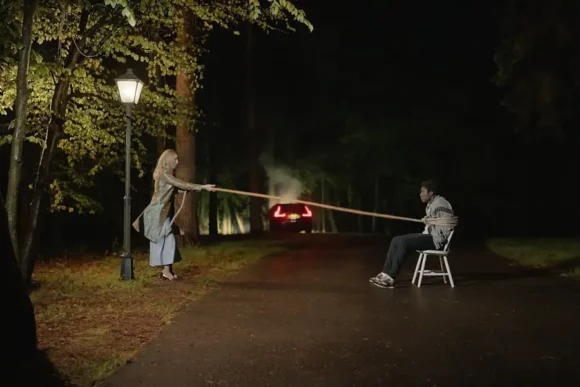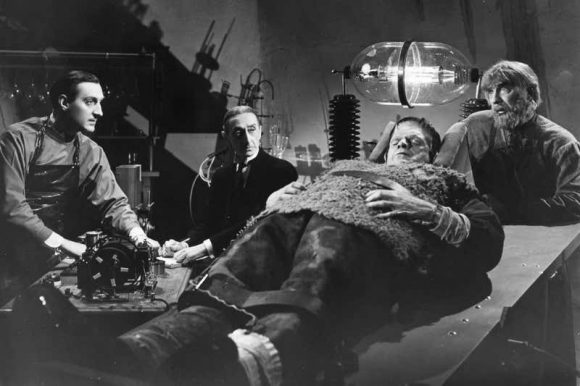Watching Sebastien Blanc’s Cerebrum for New Scientist, 12 July 2023
A year after the car he was driving span off the road and into a tree, William is shown into an all but empty room. There’s a camp bed. A TV. It’s not his old bedroom — it might not even be his house, it’s so anonymous — but it’ll have to do. William’s still learning to walk again, and the stairs will be too much for him. This is a shame, because he wants to see his mother, who never comes downstairs, never visits him, and is, it seems, constantly “under the weather”.
William scribbles a message to Richard, the man who brought him here: “Is she angry?” and Richard protests just that little bit too much. Already we feel we shouldn’t be watching, not because there’s anything bad going on, but because the script, by first-time feature director Sebastien Blanc, absolutely refuses to acknowledge our presence.
The camera work is no guide, either. Shot in the flat, pseudo-factual style of a British soap opera, Cerebrum views everything that happens with same dispassion. No jump scares. No plangent chords. We’re going to have to figure all this out for ourselves.
And so we do. Richard is William’s adoptive father. The house, for all that it is virtually empty, is indeed — or was — their family home. Dad is killing and burying women in the garden. And Mum is — or jolly well ought to be — dead, killed in the accident for which William (rightly, as it turns out) blames himself.
“You have no idea what I am doing to fix what you have done,” says Richard, in a rare moment of lost temper, and hands the astute viewer pretty much the entire plot.
It’s a gutsy, deliberate move, placing suspense over surprise. We know our Frankenstein. We know what happens to the mad professor in the attic. For one hour and 37 minutes we watch, with growing excitement and gathering horror, as the expected denouement approaches, and Ramona Von Pusch, playing William’s mother, gets the briefest of brief moments in the limelight.
Tobi King Bakare’s more or less mute turn as William, damaged in both body and mind, is visceral to a fault. Best of all, he never plays for sympathy: William hates himself so much, we rather hate him too, at least at first.
Steve Oram, who plays Richard, is a ubiquitous presence on British TV, but nothing prepared us for this. It’s impossible to keep in mind that the man is acting. Richard is a terrifying creation: a quiet, unimaginative man building his very own road to Hell.
When the floodgates finally crack, and Richard sits William down for a spot of family therapy, things take a very dark emotional turn. “I want you to visualise what is troubling you,” says Richard, “and then I want you to laugh openly at it” — at which point half of me wanted to cheer at the scriptwriter’s chutzpah, the half to run screaming from the living room.
Cerebrum is not an important movie. It’s a no-budget labour of love that gives writer-director Blanc something to talk about in pitch meetings. Structured entirely around suspense, the film can’t help but leave us feel disappointed in the final reel, though I can’t help but feel that any extra twists would have felt tacked-on. The script, which gives a black twentysomething white adoptive parents, and then hands everyone plenty of conversational rope with which to hang themselves, suggests Jordan Peele’s superbly queasy 2017 debut Get Out — but the threads here aren’t gathered nearly so tightly or so cleverly.
Watch Cerebrum for its performances, for its chillingly spare script, and for the trust it puts in its audience. Don’t expect miracles. Richard did, and look what happens to him…


